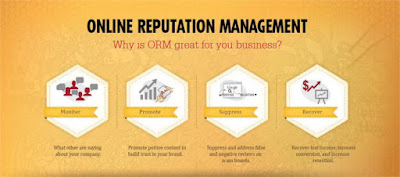The importance of the website ranking is quite known. Every website wants to rank higher in the Google search rankings. It provides a better coverage to the website and at the same time, the chances of getting explored by the users are also improved. According to a survey, the top 3 ranked sites of the Google search extract a total of 70% of the traffic. Hence, the importance of getting high in the search results is quite important. To get close to that mark most of the website try various methods and opt for outside help.
The SEO are the first thing that the website look out for. Whether the website is in its initial phase or has been put up for improvement, the SEO provides takes care of every aspect of the website to optimize it for better output. The optimization done by using the eCommerce SEO services helps the store to get better output and at the same time make the web store look better. The customers are also benefited from the optimization process and the interaction between the customers and the online store is well maintained.
Let us study the various areas where the eCommerce website SEO helps to make better conversions.
1. Keywords research

The search for any product by a customer is made on the basis of keywords. It is important for the web stores to earn the importance of keywords. In order to become, the top priority of the customers, the online stores need to be at the first page of the Google search which is only possible by making use of the relevant keywords. The eCommerce store must try to highly figure out what keywords best relate to their products. The web store must prevent the usage of the keywords that are not related to the products on the web store as it gives a rise to bounce rates.
2. Competitor keywords

Another thing to look out when selecting keywords would be the competitor keywords. In case the competitor is a well-established brand than the eCommerce store must refrain themselves from using the same keywords as their competitor is using. It will result in diversion of a larger traffic to that store. Thus, choosing the keywords which has a better impact to direct the customers to your web store must be given the priority.
3. Website structure

Another aspect of gaining better traffic to the web store would be by providing the website with better structure. In order to make sure how to get a better site structure, the eCommerce store can refer to some of the well-established websites and look at their way of presenting the products to the customers. It would be an advised thing to categorize your products depending upon multiple factors. The better understanding of the products by the customers proves to be an effective tool in making better sales. Therefore, the website must try to present a better insight of the services provided in simple way.
4. Site errors

The website might be facing a difficult time due to the errors that existed in the website. In order to make sure that the customers are always provided with results and should not face any difficulty. Moreover, the small errors in the website also give a tough time to the customers. These errors lead to the lost interest of the customers and the customers prefer to move on to other sites for purchase. The top errors you will want to correct quickly include redirecting any 404 pages to actual content, changing 302 redirects to 301 redirects, updating duplicate content pages, meta titles, and meta descriptions.
5. Website performance

It has been estimated that with a delay of 1s in website response the conversion rate are lowered by 7%. Thus, it becomes an important area of concern for the online store owners. Visitors doesn’t like to hang around the website waiting for the response. If it takes more than 3 seconds for your website to load, you can increase the speed by buying more server space, using a different CMS. The fast response from the website ensures the customers that they can deal with their purchase instantly and exit the web store easily.
6. Mobile response

The usage of mobile has considerably increased in the past few years. It has been analyzed that almost more than half of the customers use their mobile phones to browse the sites. 31% of mobile Internet users “mostly” go online using their phones (Pew, 2012), 61% of customers who visit a mobile unfriendly site are likely to go to a competitor’s site (IAB), 58% of mobile users expect mobile sites to load as quickly or faster than desktop sites (Google, 2011). Therefore, it is highly recommended for the web store owners to optimize their mobile website as the website mostly use the duplicate content for their mobile website which creates a SEO problem in rankings.
7. Customer reviews

The usage of placing the customer reviews on the product page has seen to be an effective way of attracting better traffic. The conversion rate can be improved by 14-77% by just adding the reviews. In addition to increasing conversions, customer reviews also positively impact your SEO because more reviews result in more content and frequent reviews produces fresh content, which Google loves to see. Thus, the reviews not only makes the customer’s decision of making a purchase on the product but at the same time also helps in ranking up the website in Google rankings.
Over to You
The small details that are made use by the SEO for optimizing the web store are helpful can drive the much-needed traffic. The proper implementation of these SEO techniques will surely help the online store to grow and make better conversions.




























